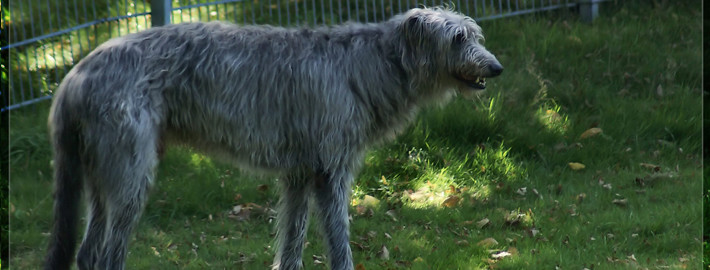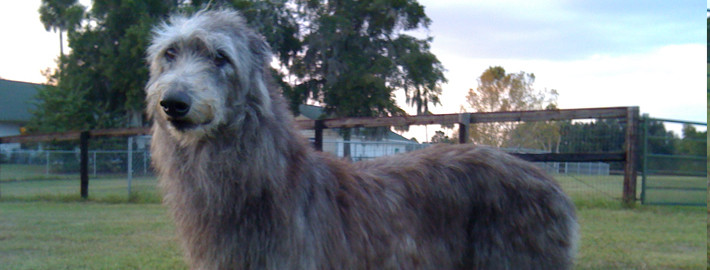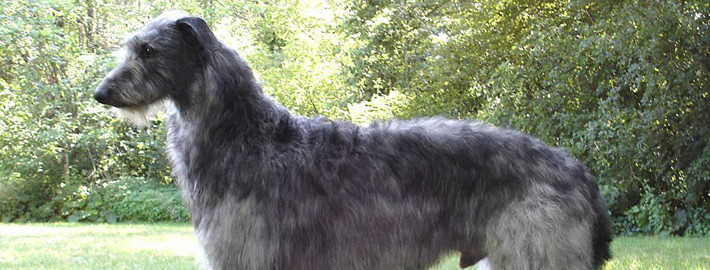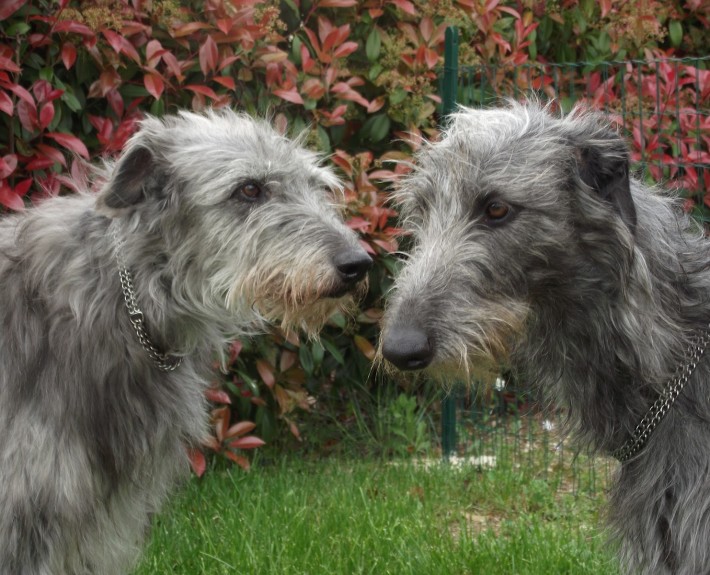What makes the Scottish Deerhound Unique?
Scottish Deerhounds are courageous and brave in the face of danger yet, unlike most hunting breeds, they don’t typically display aggressive tendencies. Therefore, these sweet-tempered dogs make great pets for hunters and active families with older children.
Breed Groups
Page Contents
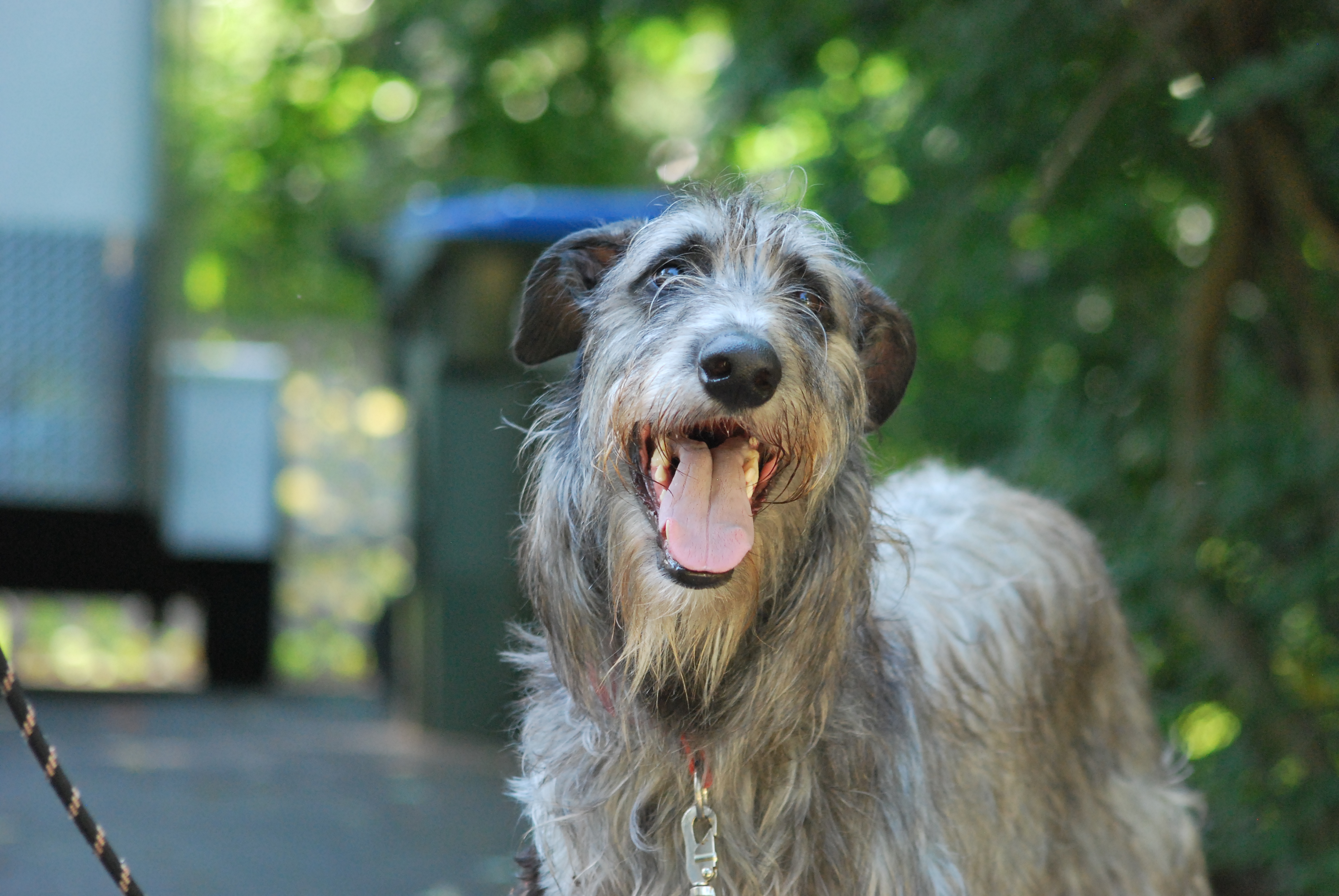
SnapShot
| Size: | Males – 30 – 32 inches (75–80 cm) Females – 28 – 29 inches (70 – 72 cm) |
| Weight: | Males – 85 to 110 pounds (40–50 kg) Females – 75 to 95 pounds (35–43 kg) |
| Origin: | Scotland |
| Life Span: | 8 – 10 years |
| Colour: | Dark Blue Gray, Dark, Light Gray, Brindles, Yellow, Sandy Red, Fawn |
| Litter Size: | 4-7 puppies |
Is the Scottish Deerhound Right For You?
Scottish Deerhounds nonetheless get along well with other dogs. Although members of this breed are not especially playful, they also make good companions for active older children. It goes without saying that Deerhounds are very large and their size alone can cause unintentional accidents to occur, so these dogs should be supervised when interacting with smaller youngsters. While their loyalty and devotion to their own family is commendable, members of this breed tend to be wary of strangers. However, Scottish Deerhounds will remain polite towards unfamiliar persons and therefore they should not be employed as either guards or watchdogs.
In 5 Words
- Gentle
- Docile
- Friendly
- Dignified
- Loyal
Characteristics
Learn About the Scottish Deerhound
Description
General Description
Members of this breed strongly resemble rough coated greyhounds in appearance as dogs of both breeds are slender and tall. However, Scottish Deerhounds are much larger in bone structure and in size than greyhounds are. This allows them to run incredibly fast and have good stamina overall. Scottish Deerhounds also have tapered muzzles, flat skulls, deep chests, and wide heads. Noses on members of this breed are generally black but dogs with blue fawn fur will occasionally have blue noses as well. A level or scissor bite is typical on members of this breed. Scottish Deerhounds also have dark eyes that are either hazel or brown in color. High set, folded ears are another breed feature but these appendages may perk up if a dog is excited by something. These dogs additionally possess a furry tail that nearly touches the ground.
Size
Males of this breed stand between 30 and 32 inches (76 and 81 centimeters) in height and they weigh between 85 and 110 pounds (38.5 and 50 kilograms). Female Deerhounds typically weigh between 75 and 95 pounds (34 and 43 kilograms). They generally measure about 28 inches (71 centimeters) tall.
Coat
Members of this breed have a coarse coat that measures about 3.5 inches (9 centimeters) in length overall but their fur may be thicker in certain places on their bodies than in others. This feature is an asset to these dogs as it protects them from the harsh climate of their native homeland.
A number of historical color combinations associated with wirehaired Deerhounds, including yellow and red fawn, are now thought to be lost. According the American Kennel Club, Scottish Deerhounds are currently available with blue, black, grey, or brindle coats. Dogs may also have black muzzles or ears. Limited amounts of white markings are likewise permitted on a dog’s tail, chest, and/or toes. However, white blazes on the head or throat are not considered acceptable.
Short History of the Scottish Deerhound
It is unclear as to whether or not Scottish Deerhounds descended from the ancient Irish Wolfhounds bloodlines, though it is generally thought that there is some connection between the two breeds. Over the centuries that the dogs that are now known as Scottish Deerhounds have been in existence, they have gone by a variety of names including Scottish greyhounds, Irish wolfdogs, Highland deerhounds, and rough greyhounds. Their original purpose remains likewise unknown, but is thought that members of this breed may have begun their careers hunting wolves and later were bred to hunt large stags. The earliest reports date back to the 16th century and report the breed use as a deer hunting dog. Scottish Deerhounds were highly in demand among nobility and only persons that were above the rank of earl were allowed to possess members of this breed. There are reports that nobles who were scheduled to be executed could use these animals as bartering chips for their lives. However, this exclusivity nearly caused the breed to become extinct. In the 1820s, a breed program was established to bring Scottish Deerhound numbers back up to stable levels. These dogs were officially recognized by the American Kennel Club in 1886.
Temperament
Members of this breed make well-mannered house pets in their adult years but they can be incredibly rambunctious as puppies. Even though they are quiet animals that do not often bark, these dogs should not be kept in apartments. This is because Deerhounds need space to run and they benefit greatly from having a fenced yard to play in. Owners should keep in mind that members of this breed were bred to hunt and they will chase anything in their path. As a result, these dogs are not recommended for owners with cats or other small pets.
Scottish Deerhounds nonetheless get along well with other dogs. Although members of this breed are not especially playful, they also make good companions for active older children. It goes without saying that Deerhounds are very large and their size alone can cause unintentional accidents to occur, so these dogs should be supervised when interacting with smaller youngsters. While their loyalty and devotion to their own family is commendable, members of this breed tend to be wary of strangers. However, Scottish Deerhounds will remain polite towards unfamiliar persons and therefore they should not be employed as either guards or watchdogs.
Caring for Your Scottish Deerhound
General Health
Scottish Deerhounds generally live between 8 and 11 years on average. Common breed health concerns include allergies, bloat, heart disease, hypothyroidism, and bone problems including a high propensity towards bone cancer. Members of this breed may also react in unusual ways to various forms of anesthesia so owners should check with their veterinarian prior to having any surgeries performed on their pets.
Care
Daily
Long daily walks or jobs are recommended for members of this breed. Scottish Deerhounds make great companions for joggers.
Weekly
Regularly cleaning a dog’s teeth prevents plaque and tartar build up and also encourages fresh breath. Scottish Deerhounds should also be brushed a few times a week to keep their coats free of mats and tangles.
Monthly
Flea, heartworm, and tick prevention medications are typically administered to dogs on a monthly basis in order to obtain the best results.
Grooming & Bathing
Scottish Deerhounds will need an occasional bath to keep them smelling fresh and clean.
Exercise & Training
Once owners discover what motivates their individual dog, Scottish Deerhounds are relatively easy to train. Food is often a powerful incentive for members of this breed but keep in mind that dispensing too many treats can cause pets to become overweight. Boredom can cause Scottish Deerhounds to become inattentive so short training sessions throughout the day are the best way to get them to learn. Consistent rules and a calmly authoritative demeanor are necessary attributes for creating a well-behaved Scottish Deerhound.

